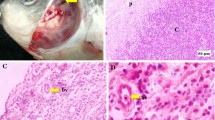Abstract
Ala-1 (activated lymphocyte antigen-1) is a murine alloantigen expressed on mitogen-stimulated peripheral T and B cells. C3H/An mice were immunized with PHA-stimulated C58 lymphocytes; reciprocal immunizations were also performed. After multiple absorptions to remove unwanted antibody specificities, the antiserum did not lyse thymocytes, lymph node, or spleen cells, but killed more than 90% of Con A-stimulated T cells and more than 90% of LPS-stimulated B cells in cytotoxicity tests. Quantitative absorption studies confirmed that thymocytes are Ala-1−, but revealed the presence of some Ala-1 antigen in normal lymph node and spleen populations. The strain distribution of Ala-1 was determined for 23 inbred strains. The reactions of the two reciprocal antisera (C3H anti-C58, and C58 anti-C3H) were mutually exclusive on all strains tested, indicating that the antisera probably recognize antithetical forms of Ala-1. Since thymocytes cultured with Con A do not express Ala-1, whereas peripheral mitogen-stimulated cells do, we propose that Ala-1 is a differentiation antigen, the expression of which is restricted to the late stages of development of T and B cells.
Similar content being viewed by others
Abbreviations
- Con A:
-
concanavalin A
- PHA:
-
phytohemagglutinin
- LPS:
-
lipopolysaccharide
- C:
-
complement
- BSA:
-
bovine serum albumin
- B6:
-
C57BL/6 mice
- FBS:
-
fetal bovine serum
References
Abbott, J., Hoffmann, M.K., Chin, A.F., and Hämmerling, U.: Sequential appearance of surface markers in the ontogeny of B lymphocytes.In N. Müller-Bérat (ed.):Progress in Differentiation Research, North Holland, Amsterdam, pp. 545–550, 1976
Andersson, J. and Melchers, F.: Maturation of mitogen-activated bone marrow-derived lymphocytes in the absence of proliferation.Eur. J. Immunol. 4:533–539, 1974
Andersson, J., Möller, G., and Sjoberg, O.: Selective induction of DNA synthesis in T and B lymphocytes.Cell. Immunol. 4:381–393, 1972
Boyse, E.A., Itakura, K., Stockert, E., Iritani, C.A., and Miura, M.: Ly-C: A third locus specifying alloantigens expressed only on thymocytes and lymphocytes.Transplantation 11:351–352, 1971
Boyse, E.A., Miyazawa, M., Aoki, T., and Old, L.J.: Ly-A and Ly-B: Two systems of lymphocyte isoantigens in the mouse.Proc. Roy. Soc. Lond. (Biol.) 170:175–193, 1968
Cantor, H. and Boyse, E.A.: Functional subclasses of T lymphocytes bearing different Ly antigens. I. The generation of functionally distinct T cell subclasses is a differentiative process independent of antigen.J. Exp. Med. 141:1376–1389, 1975
Dutton, R.W.: Inhibitory and stimulatory effects of Concanavalin A on the response of mouse spleen cell suspensions to antigen. II. Evidence for separate stimulatory and inhibitory cells.J. Exp. Med. 138:1496–1505, 1973
Feeney, A.J. and Hämmerling, U.: Differentiation of murine T and B lymphocytes from resting to effector cells, as characterized by Ala-1 (activated lymphocyte antigen-1).In N. Müller-Bérat (ed.):Progress in Differentiation Research, North Holland, Amsterdam, pp. 551–557, 1976
Goldberg, E.H., Aoki, T., Boyse, E.A., and Bennett, D.: Detection of H-2 antigens on mouse spermatozoa by the cytotoxicity test.Nature 228:570–572, 1970
Gorer, P.A. and O'Gorman, P.: The cytotoxic activity of isoantibodies in mice.Transplant. Bull. 3:142–143, 1956
Greaves, M.F. and Janossy, G.: Activation of lymphocyte by phytomitogens and antibodies to cell surface components-a model for antigen-induced differentiation.In L.G. Silvestri (ed.):Third Lepetit Colloquium on Cell Interactions, pp. 143–155, North Holland, Amsterdam, 1972
Hämmerling, G.J., Black, S.J., Segal, S., and Eichmann, K.: Cellular expression of la antigens and their possible role in immune reactions.In V.P. Eijsvoogel (ed.):Proceedings of the Tenth Leukocyte Culture Conference, Academic Press, New York, 1976, in press
Janossy, G. and Greaves, M.F.: Lymphocyte activation. II. Discriminating stimulation if lymphocyte subpopulations by phytomitogens and heterologous antilymphocyte sera.Clin. Exp. Immunol. 10:525–536, 1972
Kisielow, P., Hirst, J.A., Shiku, H., Beverley, P.C.L., Hoffmann, M.K., Boyse, E.A., and Oettgen, H.F.: Ly antigens as markers for functionally distinct subpopulations of thymus-derived lymphocytes of the mouse.Nature 253:219–220, 1975
Perlmann, P. and Holm, G.: Cytotoxic effects of lymphoid cellsin vitro. Adv. Immunol. 11:117–1983, 1969
Scheid, M., Boyse, E.A., Carswell, E.A., and Old, L.J.: Serologically demonstrable alloantigens of mouse epidermal cells.J. Exp. Med. 135:938–955, 1972
Author information
Authors and Affiliations
Rights and permissions
About this article
Cite this article
Feeney, A.J., Hämmerling, U. Ala-1: A murine alloantigen of activated lymphocytes. Immunogenetics 3, 369–379 (1976). https://doi.org/10.1007/BF01576968
Received:
Issue Date:
DOI: https://doi.org/10.1007/BF01576968




